Since June 1, 2024, visitors to Machu Picchu can experience the iconic Inca citadel in a whole new way with updated Machu Picchu circuits 2025. These new routes aim to improve the visitor experience by offering better crowd management while still allowing travelers to explore the breathtaking ruins and stunning Andean landscapes.
Walking along these carefully designed circuits, you’ll follow in the footsteps of the ancient Incas, surrounded by panoramic views, lush nature, and centuries-old history. The revised routes will allow visitors to discover Machu Picchu’s wonders with fewer crowds, ensuring a more immersive and enjoyable experience.
Would you like to know which Machu Picchu circuit in 2025 is best for you? Read on for the details!
Machu Picchu circuits 2025 in short
There are now 3 main Machu Picchu circuits in 2025. Altogether, there are 10 different routes. Here, we will explain each one.
Circuit 1, panoramico – Machu Picchu Ticket
- Circuit 1 – Machu Picchu Mountain Route
- Circuit 1 – Upper Terrace Route (Circuito 1 – Ruta terraza superior)
- Circuit 1 – Sun Gate Route – Intipunku (Circuito 1 – Ruta Portada Intipunku) High season only
- Circuit 1 – Inca Bridge Route (Circuito 1 – Ruta Puente Inka) High season only
Circuit 2, clasico – Machu Picchu Ticket
- Circuit 2 – Classic Designed Route (Circuito 2 – Ruta Clasico Diseñada)
- Circuit 2 – Lower Terrace Route (Circuito 2 – Ruta Terraza Inferior)
Circuit 3, de la realeza – Machu Picchu Ticket
- Circuit 3 – Huayna Picchu Mountain Route
- Circuit 3 – Royalty Designed Route (Circuito 3 – Ruta Realeza Diseñada)
- Circuit 3 – Great Caves Route (Circuito 3 – Ruta Gran Caverna) High season only
- Circuit 3 – Huchuy Picchu Route (Circuito 3 – Ruta Huchuy Picchu) High season only
High season only: June, July, August, September and until October 15, 2025
What is the best Machu Picchu circuit?
With the updated Machu Picchu circuits 2025, choosing the best route depends on your travel preferences. Each circuit offers a unique way to experience the Inca citadel, from panoramic viewpoints to hidden ruins.
Best circuit for Machu Picchu in 2025: Circuit 2 (Classic Route; 2A)
- Why? Circuit 2 is the most comprehensive option, allowing visitors to explore both lower and upper sectors of Machu Picchu. It includes key highlights like the classic viewpoint, the Guardian’s House, the Main Plaza, and the Temple of the Sun.
- Who is it for? Travelers who want to see the most iconic spots and have enough time to explore.
- Bonus: This circuit provides some of the best photo opportunities without the limitations of shorter routes, such as circuit 1.
Machu Picchu circuits 2025 explained
The new circuits at Machu Picchu offer diverse experiences for every type of visitor. The Panoramico Circuit (Circuit 1) provides breathtaking views and stunning landscapes, perfect for those who love scenic beauty. The Clasico Circuit (Circuit 2) is the traditional path, showcasing all the must-see spots within the ancient citadel, ideal for first-time visitors. For a unique and exclusive experience, the De la Realeza Circuit (Circuit 3) takes you through the areas once reserved for Inca nobility, revealing the rich history and royal past of Machu Picchu.
Machu Picchu circuit 1 (panoramico) for 2025
The Panoramico Circuit offers breathtaking views and allows you to enjoy the stunning landscapes surrounding Machu Picchu. This route is perfect for those who want to take in the natural beauty of the area while exploring the ruins.
Circuit 1 – Machu Picchu Mountain Route
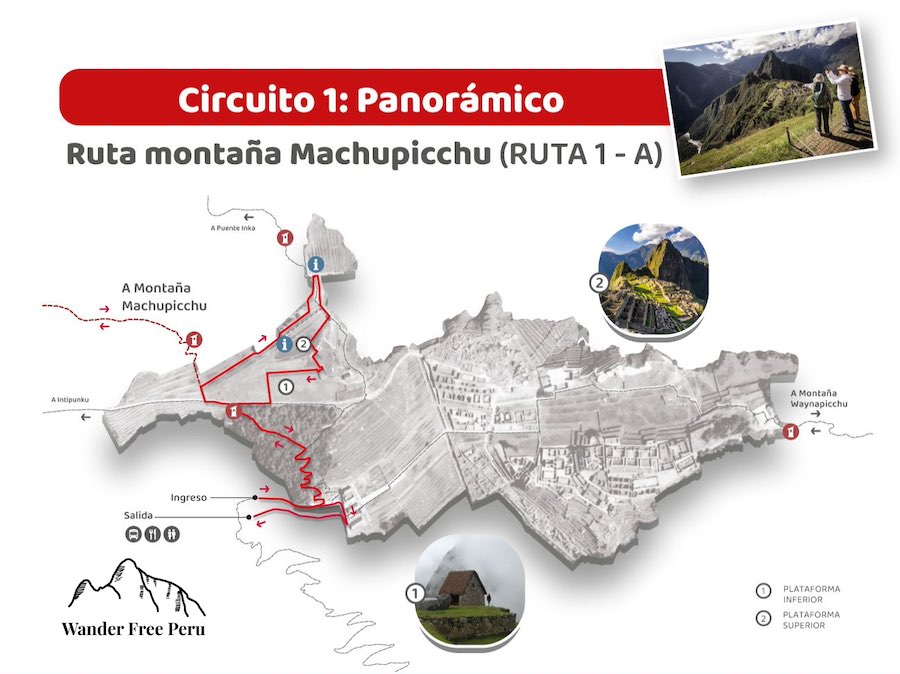
Circuit 1 – Upper Terrace Route (Circuito 1 – Ruta terraza superior)
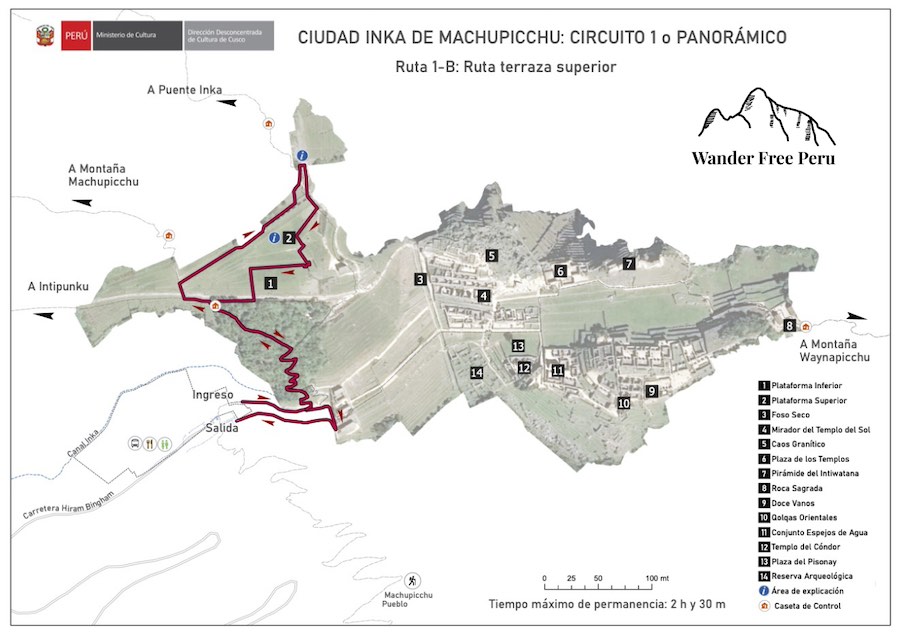
Circuit 1 – Sun Gate Route – Intipunku (Circuito 1 – Ruta Portada Intipunku) High season only
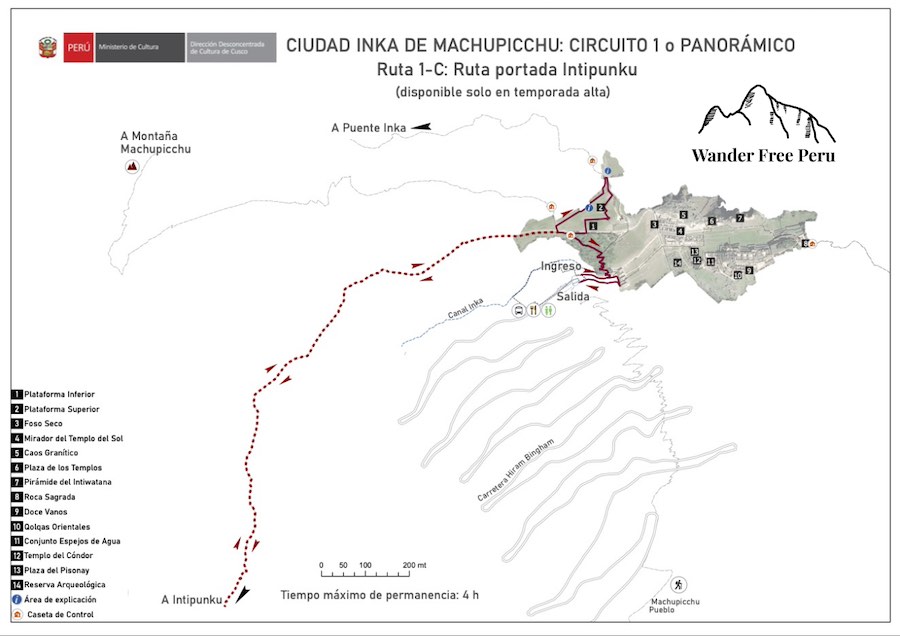
Circuit 1 – Inca Bridge Route (Circuito 1 – Ruta Puente Inka) High season only
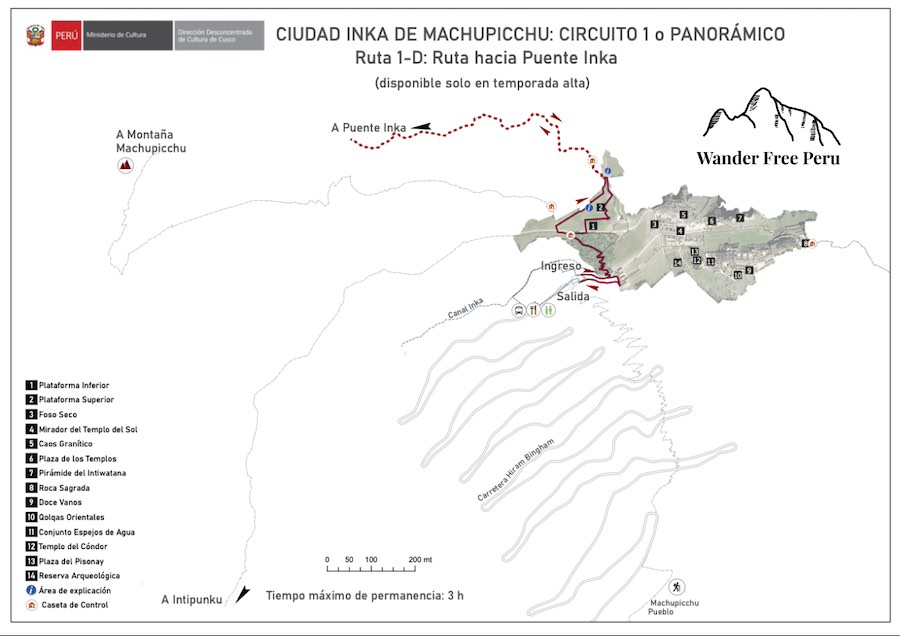
Machu Picchu circuit 2 (clasico) for 2025
The Clasico Circuit is the traditional path through Machu Picchu, taking you to all the must-see spots within the site. This route provides a comprehensive experience of the ancient citadel, making it ideal for first-time visitors.
Circuit 2 – Classic Designed Route (Circuito 2 – Ruta Clasico Diseñada)
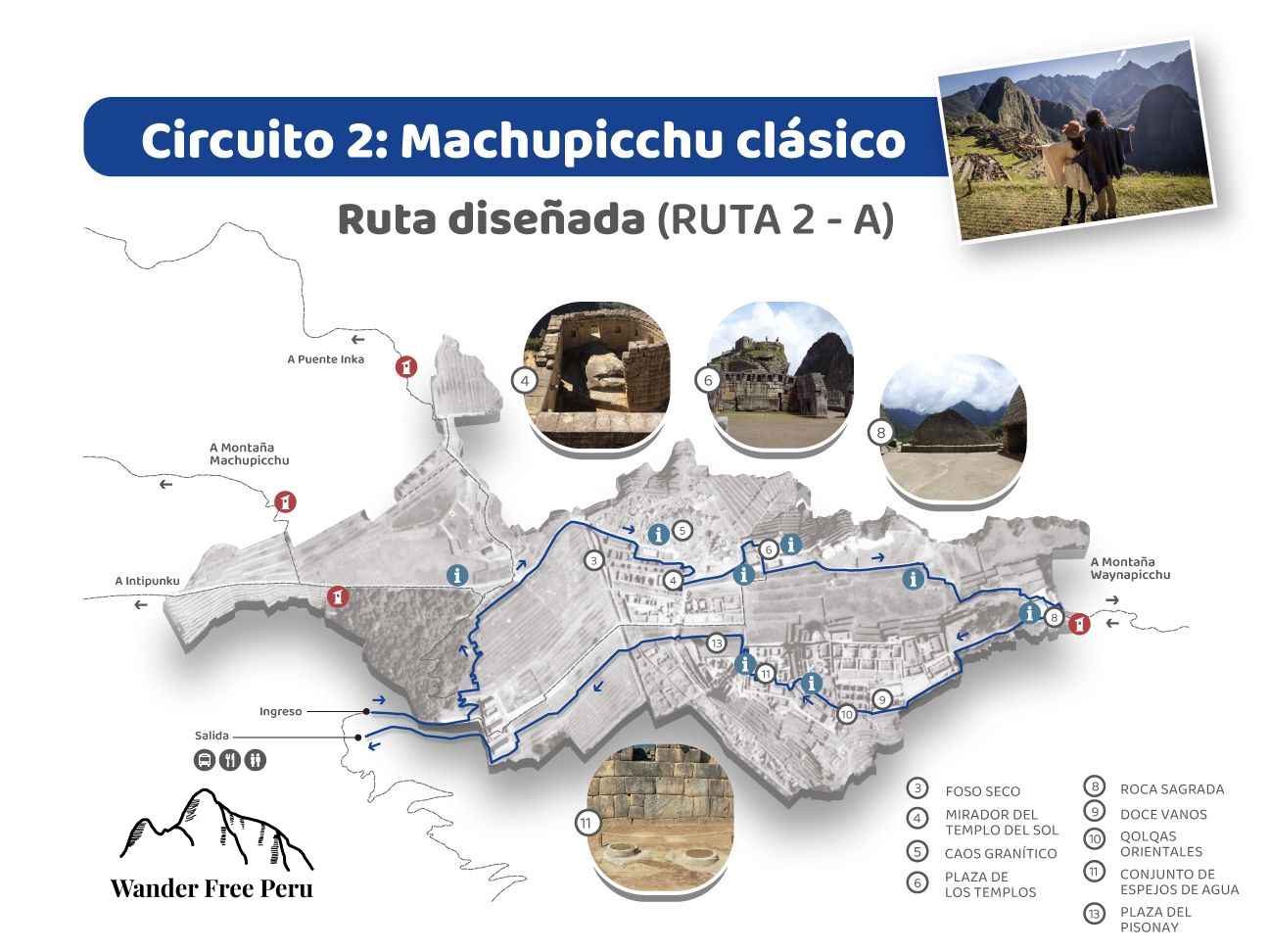
Circuit 2 – Lower Terrace Route (Circuito 2 – Ruta Terraza Inferior)
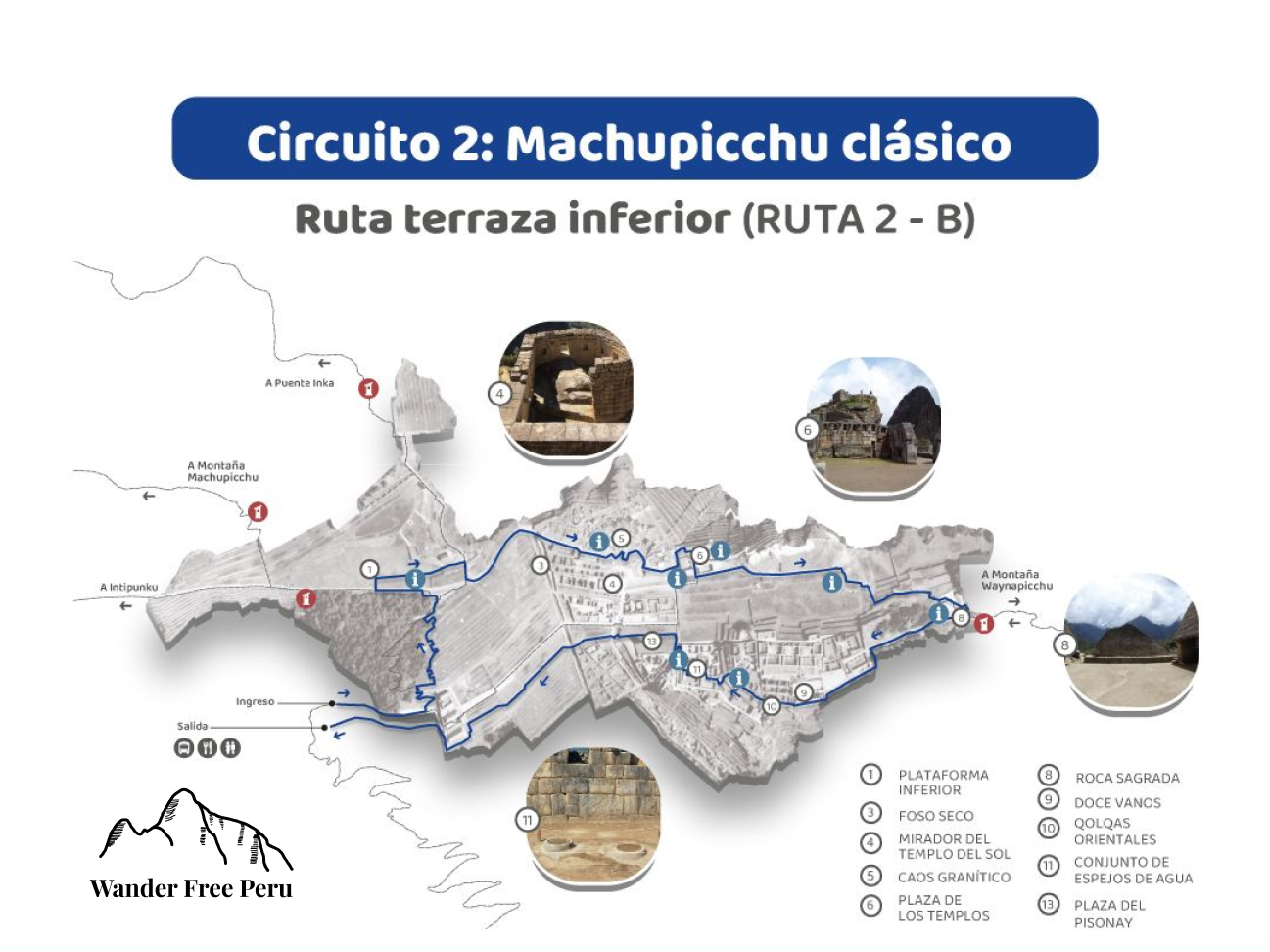
Excited to visit these new circuits of Machu Picchu?
Machu Picchu circuit 3 (de la realeza) for 2025
The De la Realeza Circuit, or Royalty Circuit, offers an exclusive glimpse into the areas once reserved for Inca nobility. This route takes you through some of the most historically significant and less-traveled parts of Machu Picchu, providing a unique perspective on its royal past.
Circuit 3 – Huayna Picchu Mountain Route
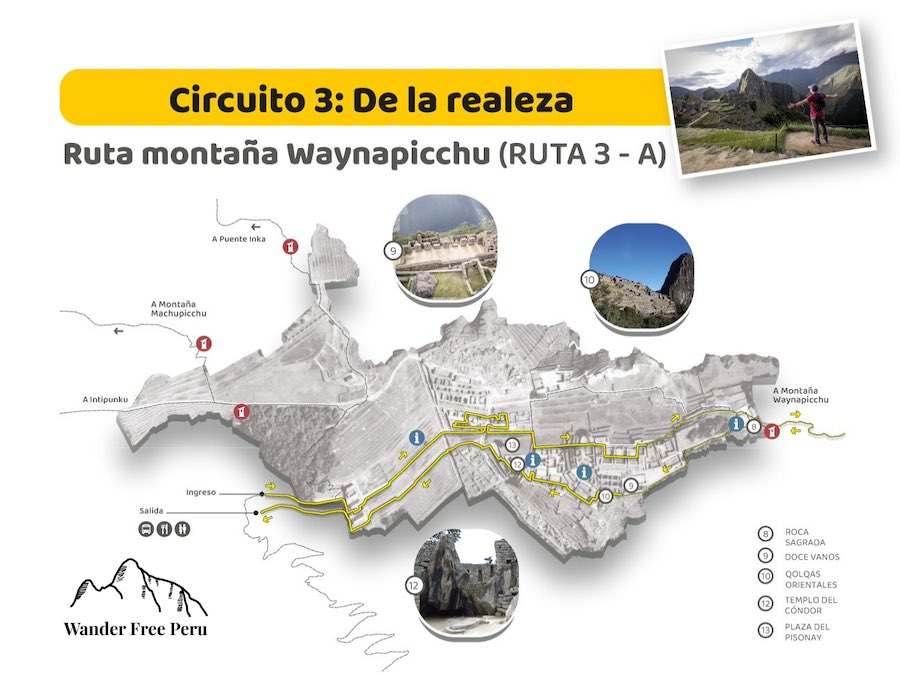
Circuit 3 – Royalty Designed Route (Circuito 3 – Ruta Realeza Diseñada)
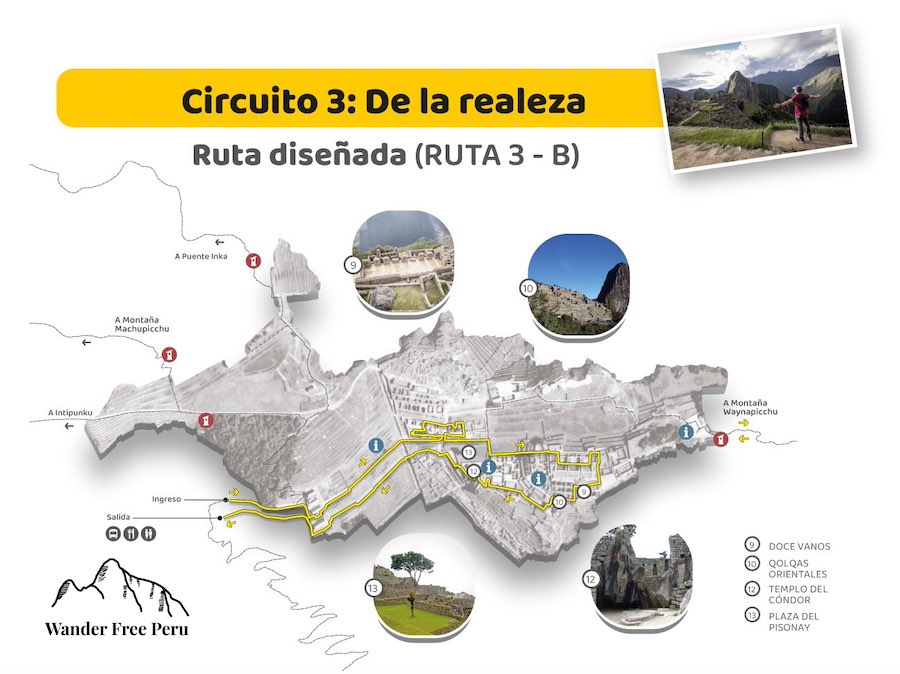
Circuit 3 – Great Caves Route (Circuito 3 – Ruta Gran Caverna) High season only
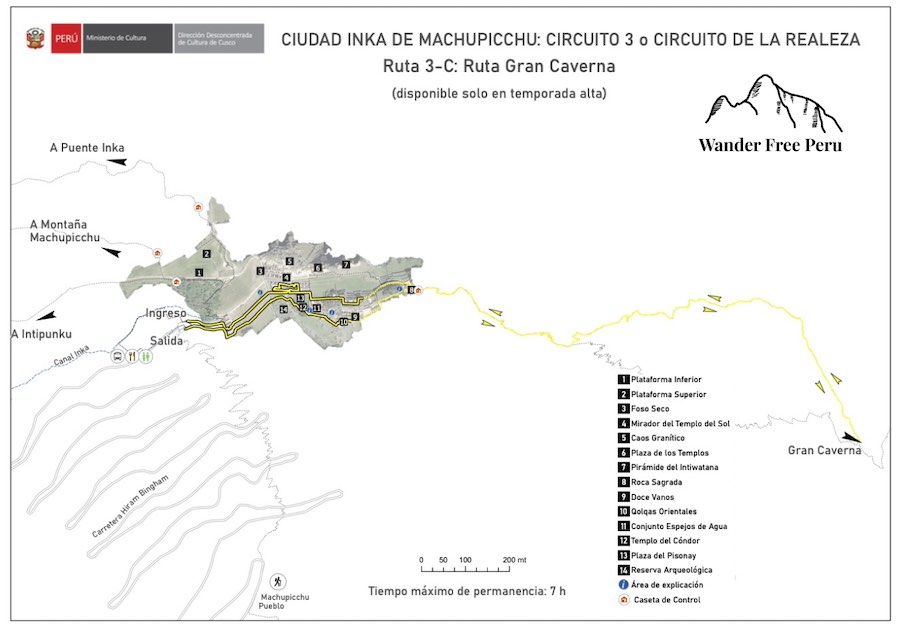
Circuit 3 – Huchuy Picchu Route (Circuito 3 – Ruta Huchuy Picchu) High season only
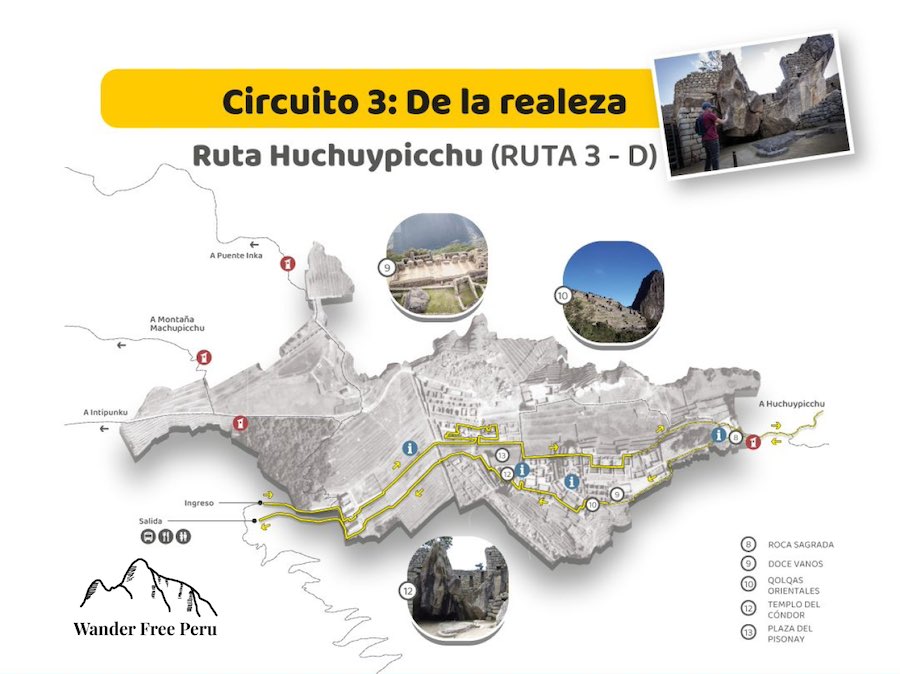
The Machu Picchu circuits 2025 offer visitors a more immersive and personalized way to explore this world-famous archaeological site. With carefully designed routes, travelers can experience the ruins in a way that best matches their interests.
Whether you choose the Panoramico Circuit for breathtaking views, the Clasico Circuit to see the most iconic landmarks, or the De la Realeza Circuit for exclusive historical insights, each path provides a unique perspective on the Inca citadel. Are you looking for more information about Machu Picchu? Check the official website: https://www.machupicchu.gob.pe/.
These Machu Picchu circuits for 2025 not only enhance crowd management but also ensure that every visitor can fully appreciate the history, beauty, and significance of this UNESCO World Heritage Site. As you plan your visit, these circuits will make your journey even more enriching and memorable.
Last updated:
